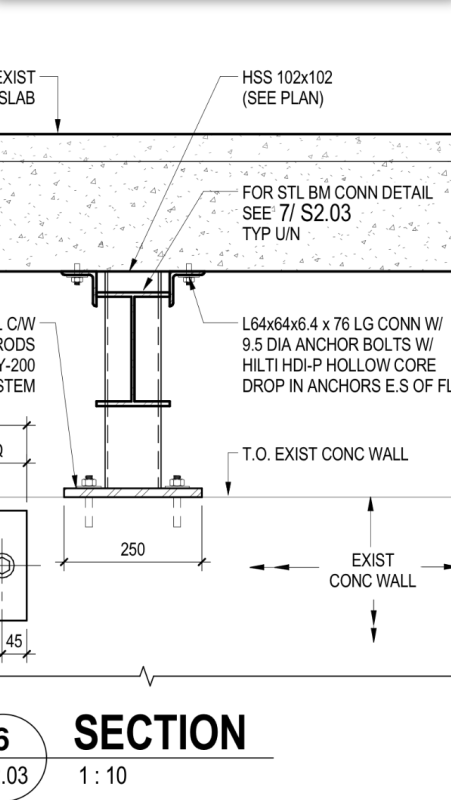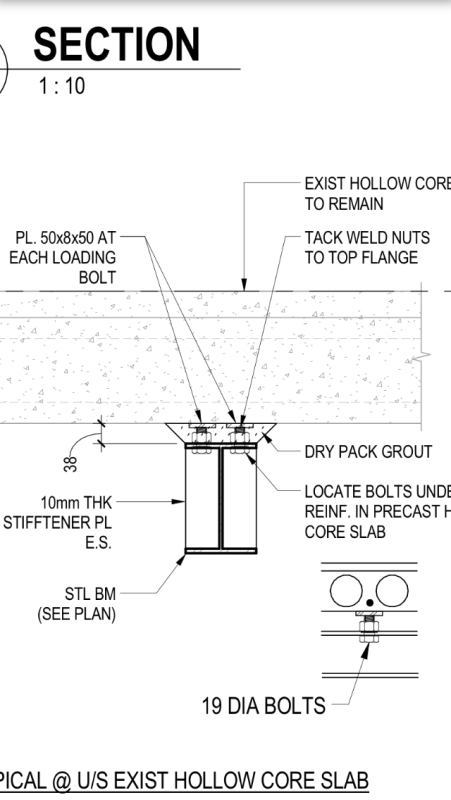I have a project with hollow-core planks bearing on structural steel framing. 8" hollow-core with 2" normal weight topping. I have specified the planks must be supplied with embedded plates to allow for welding to the top flange of the steel beams. I'm requiring this where the planks bear on the steel and also when the plank is parallel to the beam span. The plank manufacturer is stating they "do not recommend welding along the length of the plank because it does not allow for vertical movement due to volumetric changes, and may result in cracking."
I have not seen this in the past. Does anyone have experience with this condition? I need the planks to brace the top flange, and I thought this was the standard method.
I have not seen this in the past. Does anyone have experience with this condition? I need the planks to brace the top flange, and I thought this was the standard method.


